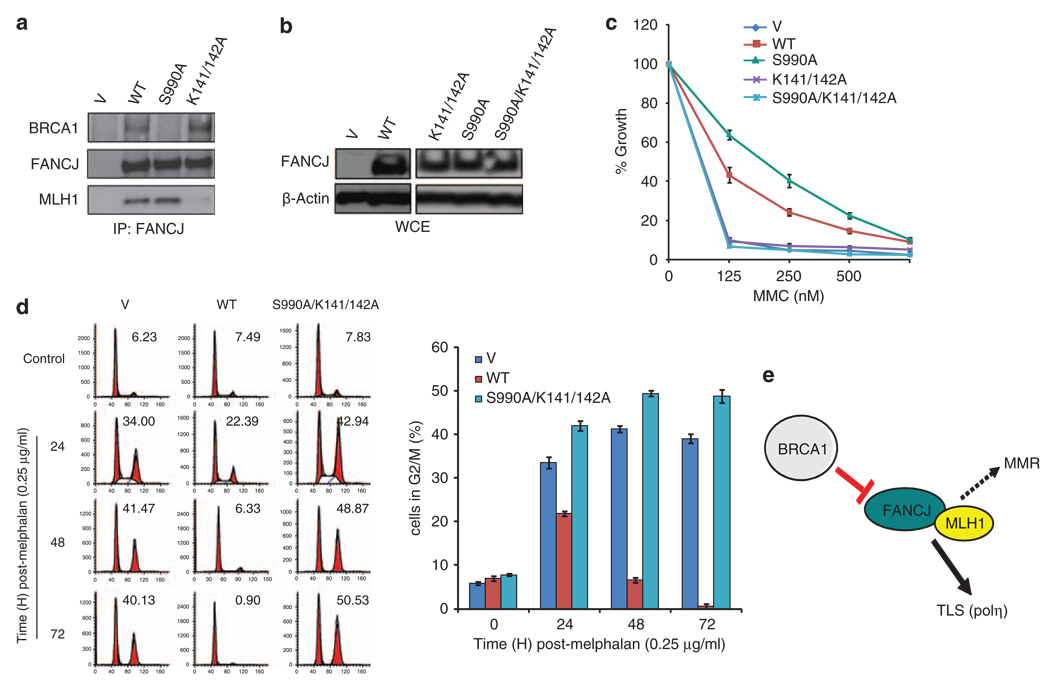Figure 5.
FANCJS990A requires MLH1 binding to promote polη-dependent bypass. (a) FA-J cells stably expressing vector, FANCJWT, FANCJS990A, or FANCJK141/142A were collected and immunoprecipitated with anti-FANCJ Abs and blotted with the indicated Abs. (b) FA-J cells stably expressing vector, FANCJWT, FANCJS990A, FANCJK141/142A, or FANCJK141/142A/S990A were either collected for immunoblot with the indicated Abs or (c) treated with the indicated doses of MMC and allowed to grow for 5–8 days. The cells were then collected and counted to analyze percent growth. Data represent mean percent ± s.d. of growth from three independent experiments. (d) The FA-J cell lines were treated constitutively with 0.25 µg/ml melphalan, collected at the indicated times, and analyzed by FACS to determine the percentage of cells in G2/M. A representative experiment is shown. The bar graph represents mean ± s.d. from three independent experiments. (e) Model summarizes observations of this study. FANCJ when uncoupled from BRCA1 promotes polη-dependent TLS in a manner that requires MLH1 binding. Dotted line to MMR is added as a discussion point. To promote TLS, FANCJ could limit negative regulators of TLS, such as MMR.

